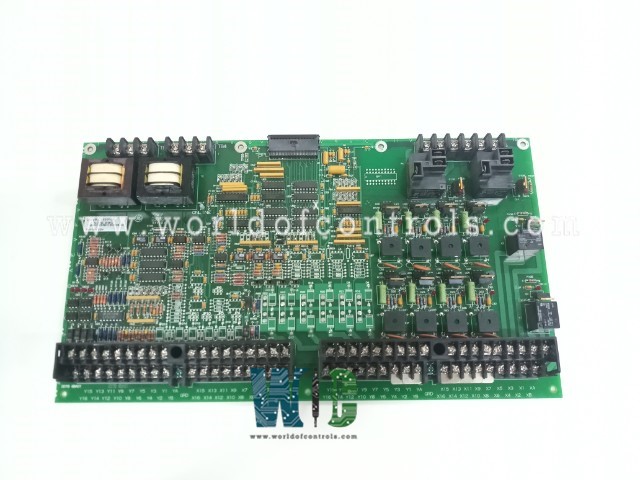
World Of Controls understands the criticality of your requirement and works towards reducing the lead time as much as possible.
DS200DDTBG2A - LCI Auxiliary I/O Terminal Board is available in stock which ships the same day.
DS200DDTBG2A - LCI Auxiliary I/O Terminal Board comes in UNUSED as well as REBUILT condition.
To avail our best deals for DS200DDTBG2A - LCI Auxiliary I/O Terminal Board, contact us and we will get back to you within 24 hours.
SPECIFICATIONS:
Part Number: DS200DDTBG2A
Manufacturer: General Electric
Series: Mark V LM
Product Type: LCI Auxiliary I/O Terminal Board
Mounting: Panel/rack-mounted
I/O Channels: Multiple input/output channels
Number of channels: 12
Power supply voltage: 28 V dc
Voltage Range: 14 to 32 V dc
Operating Temp: -20°C to +60°C
Availability: In Stock
Country of Origin: United States
Manual: GEI-100219
FUNCTIONAL DESCRIPTION:
DS200DDTBG2A is an LCI Auxiliary I/O Terminal Board manufactured and designed by General Electric as part of the Mark V LM Series used in GE Speedtronic Gas Turbine Control Systems. The DS200DDTB board is a high-voltage terminal board used for connecting auxiliary I/O signals in a system. It interfaces with the DS200ADMA analog-to-digital module daughterboard, which is mounted on the DS200DSPC digital signal processor control board. The DDTB connects to the ADMA board via high-density connectors and a ribbon cable, with power supplied by the ADMA. It provides signal conditioning, scaling, buffering, and isolation, ensuring that harsh environment system signals are accessible to the DSPC board’s digital signal processor (DSP). The DDTB allows external connections for high-voltage signals, contact I/O, current measurement (using Hall-effect devices), and high-current CTs. There are G1 and G2 versions of the board, with the G2 version lacking some functionalities of the G1.
ANALOG INPUTS:
ANALOG OUTPUTS:
WOC has the largest stock of GE Speedtronic Control System Replacement Parts. We can also supply unused and rebuilt backed-up with a warranty. Our team of experts is available round the clock to support your OEM needs. Our team of experts at WOC is happy to assist you with any of your automation requirements. For pricing and availability on parts and repairs, kindly contact our team by phone or email.
What is the purpose of the LCI Auxiliary I/O Terminal Board?
The LCI Auxiliary I/O Terminal Board is used to manage and interface auxiliary input/output signals within Load Commutated Inverter (LCI) systems, providing signal conditioning, scaling, and isolation.
How is the LCI Auxiliary I/O Terminal Board connected to other system components?
The board connects to other components, such as the ADMA and DSPC boards, using high-density connectors and ribbon cables. Power is supplied by the ADMA board.
What types of signals can be connected to the LCI Auxiliary I/O Terminal Board?
It supports connections for high voltage signals, contact I/O, current measurement (using Hall-effect devices), and high current CTs (Current Transformers).